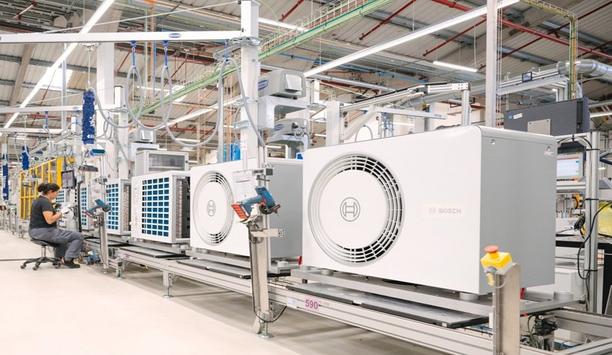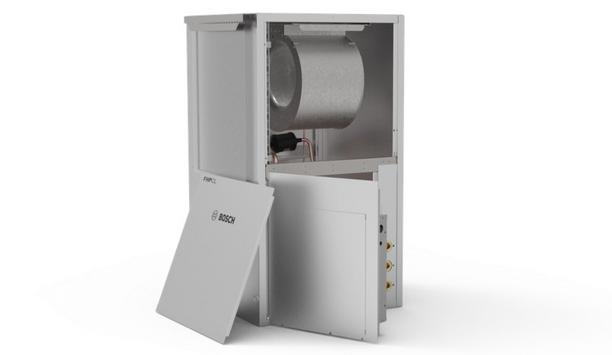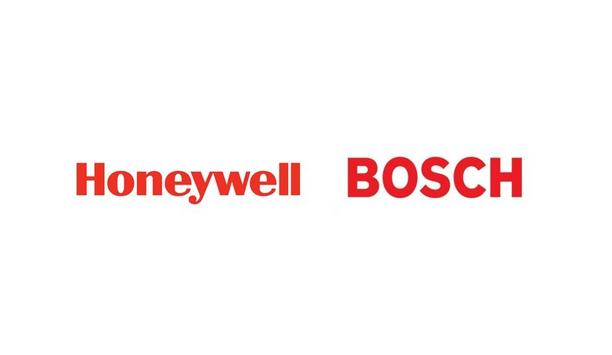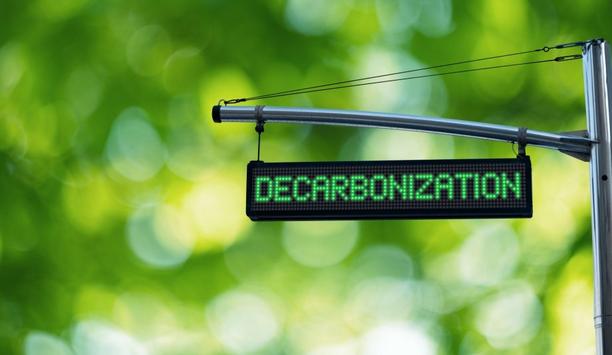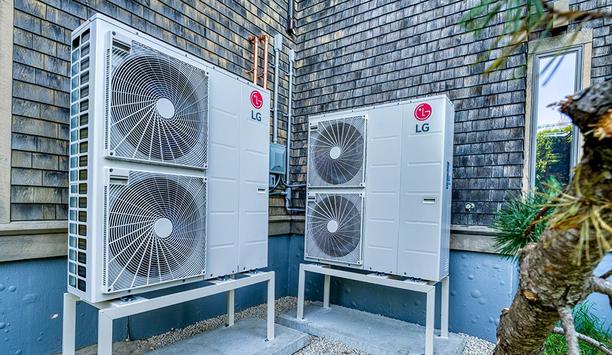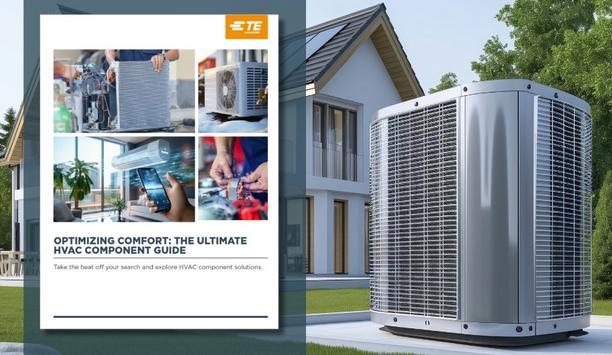Bosch Thermotechnology - Experts & Thought Leaders
Latest Bosch Thermotechnology news & announcements
Bosch, the supplier of technology and services, is continuing its growth course with a strategic acquisition. For its Energy and Building Technology business sector, the Bosch Group plans to take over the global HVAC solutions business for residential and light commercial buildings from Johnson Controls. As part of this transaction, Bosch also intends to acquire 100 percent of the Johnson Controls-Hitachi Air Conditioning (JCH) joint venture, including Hitachi’s 40 percent stake. acquisition price The Bosch shareholders and supervisory board have approved the transaction. Binding agreements on the acquisitions were signed by the parties involved today. The acquisition is subject to approvals from the antitrust authorities. The purchase price for the acquired businesses is 8 billion dollars (7.4 billion euros). The acquisition is expected to be closed in approximately 12 months. A global HVAC position "As the biggest acquisition in Bosch history, this is an important milestone in the systematic implementation of our strategy for 2030. We are dynamically pushing ahead with the strong development of Bosch, and will achieve a globally leading position in the promising HVAC market with this acquisition," says Stefan Hartung, Chairman of the Board of Management of Robert Bosch GmbH. He adds, "In taking this step, moreover, we will strengthen our presence in the U.S. and Asia and achieve a better balance among our business sectors. This is also part of our strategy. In this way, we will open up further growth opportunities and put the company as a whole on a firmer footing." acquisition product portfolio The product portfolio covers the entire spectrum of HVAC solutions for residential and light commercial buildings Together with JCH, the businesses Bosch intends to acquire generated sales revenue totaling roughly 4 billion euros in 2023, and employ some 12,000 people worldwide. The transaction includes 16 manufacturing sites and 12 engineering locations in more than 30 countries. The product portfolio covers the entire spectrum of HVAC solutions for residential and light commercial buildings and includes well-known brands, such as York and Coleman in the U.S. and Hitachi in Asia, for which Bosch will be granted a long-term license. sales revenue growth Christian Fischer, the Deputy Chairman of the Board of Management of Robert Bosch GmbH who is responsible for the Bosch Group’s strategic growth initiatives, and thus for this planned acquisition, said, "With this acquisition, Bosch will accelerate its growth and nearly double its sales revenue in the HVAC market to roughly 9 billion euros." He adds, "Together with our future colleagues, we want to seize the huge opportunities offered by the market for the further growth of this new unit." global HVAC market growth The company expects the global HVAC market to grow 40 percent by 2030, driven by technological progress, the fight against climate change, and new regulations. "The acquired businesses will become part of the Bosch core business – and this will benefit customers, installation partners, and associates," said Christian Fischer, adding "We have proved several times in the past that we can successfully integrate brands, take them forward through investments, and strengthen them." innovative products and services In the words of George Oliver, CEO of Johnson Controls, "Our leading residential and light commercial business and its world-class team perfectly complement the Bosch portfolio. We are confident that under Bosch’s leadership, the business will continue to excel and deliver innovative products and services to its customers. We look forward to seeing their continued success." air condition business expansion Jun Abe, Executive Officer and Executive Vice President at Hitachi, and Executive Officer and General Manager of the Hitachi Connective Industries division, says, "The new partnership with Bosch to establish a global air-conditioning business is an important step." Jun Abe adds, "The market is dynamic and is flourishing. I firmly believe that a global supplier such as Bosch, with its strong European presence and many years of experience in the heating business, is the optimum partner for further expanding the global air-conditioning business of the longstanding Hitachi brand." alternative energy solutions At the same time, air-conditioning technology is growing in importance both in Europe and worldwide The current transformation in technologies and market conditions in the field of HVAC solutions opens up huge opportunities for supplying innovative and energy-efficient solutions for mitigating global warming and the move to alternative energy. Heating technology is moving away from fossil fuels, such as oil and gas toward heat pumps and heat pump-hybrid solutions. At the same time, air-conditioning technology is growing in importance both in Europe and worldwide. innovative, energy-efficient solutions Frank Meyer, the Bosch Management Board Member responsible for the Energy and Building Technology business sector, and thus also for the Bosch Home Comfort Group and the integration of the new unit, says, "Bosch aims to play an active part in shaping the innovative and growing market for energy and building technology and to occupy a globally leading position." He adds, "With this acquisition, we are improving our position, especially in air conditioning. In addition, we will be able to globally expand our heat pump business and achieve greater economies of scale. With our technology and our products, we can work together to make a bigger contribution to energy efficiency, more comfort, and a better quality of life for many people in light of global warming. That’s ‘Invented for life’ in its truest sense." Home Comfort Bosch intends to integrate the acquired businesses into the Home Comfort Group. The 14,600 associates of the existing Bosch Home Comfort Group generated sales of roughly 5 billion euros in 2023. Home Comfort is excellently positioned in the major segments of the heating market, the heat pump market, and the market for heat pump-hybrid solutions, which comprise a heat pump and a fossil fuel-fired boiler for peak loads. Complementary portfolio Following the transaction, the new unit will have a workforce of more than 26,000 and be able to benefit considerably from economies of scale and a complementary portfolio at the interface between heating and cooling. Jan Brockmann, President of the Bosch Home Comfort Group, says, "With our successful heating technology in Europe, we already have a strong team and a sound foundation. Now is the right time for a bold step toward a global presence. Demand for air-conditioning solutions is growing especially fast." established brands, and a strong team In the U.S., for example, Bosch expects to see more than 50 percent growth by the end of the decade In the U.S., for example, Bosch expects to see more than 50 percent growth by the end of the decade, and in Europe, as well, strong growth of approximately 30 percent is forecast up to 2030. "Together, we will be able to build on strong, well-established brands. We are looking forward to shaping the future of the Bosch Home Comfort Group with our future colleagues and their innovations and ideas," adds Jan Brockmann. HVAC business Bosch plans The HVAC business Bosch plans to acquire from Johnson Controls has an especially strong presence in the United States and Asia. In the United States, its portfolio focuses on ducted solutions in which air passes from a central source through ducts to heat or cool all rooms at the same time. In Asia, it especially sells ductless solutions, where interior units in each room can heat or cool individually, as well as modern air-conditioning systems based on variable refrigerant flow (VRF) systems. This technology is used in commercial applications ranging from light commercial premises, such as retail stores to large projects, such as hotels and hospitals. The portfolio in these regions is supplemented by efficient air-water heat pumps, which Johnson Controls offers above all in Europe.
Bosch Home Comfort, a pioneering source of high-quality heating, cooling, and hot water systems, continues its commitment to high-quality green living with the addition of its latest HVAC solutions: Bosch CL and RL Series Water Source Heat Pumps (WSHP). The new CL and RL Series heat pumps feature a low global warming potential (GWP) refrigerant in accordance with the forthcoming AIM Act, which will go into effect in January 2025. CL and RL Series heat pumps The release of Bosch Home Comfort’s CL and RL Series WSHP reinforces the company’s reputation “We have always had a mindset of solving tomorrow’s challenges today with innovation and comfort at the forefront,” said Ian McIver, product manager at Bosch Home Comfort. “What we have solved for with our Bosch CL and RL Series heat pumps is a need for an HVAC unit design where high-quality and efficiency meet accessibility. Not only will these products make the jobs of techs and installers more seamless, but they will also offer them a deeper product portfolio to meet their customers’ needs and wants.” Driven by industry-pioneering heat pump technology, the release of Bosch Home Comfort’s CL and RL Series WSHP reinforces the company’s reputation as a pioneering manufacturer of highly efficient, electric solution heat pumps across residential and commercial markets. Bosch CL Series Heat Pumps The single-stage unit Bosch CL Series was designed to fit most commercial replacement projects given its compact cabinet design and its quiet operations to eliminate unwanted noise. The CL Series has a swinging electrical box, a slide-out blower on the vertical units, and designated compartments for high and low-voltage components. Together, these features not only improve safety conditions for technicians and installers, but also streamline routine services and repairs by offering greater accessibility to the unit’s compressor, air coils, and other internal components. The CL Series is available in vertical or horizontal units with sizes ranging from ½ to 6 tons. Bosch RL Series Bosch RL Series is equipped with a swinging and divided electrical box for faster and safer maintenance The Bosch RL Series builds off the company’s legacy of unrivaled HVAC technologies in a smaller design that’s easier to service and ideal for any home HVAC upgrade or new construction project. Similar to the commercial model, the Bosch RL Series is equipped with a swinging and divided electrical box for faster and safer maintenance, as well as a slide-out blower on the vertical units. Additionally, each RL Series is made with Permanent Split Capacitor Motors (PSC), which use the latest stator technology at a lower cost and a Unit Protection Module (UPM) that interfaces directly with homeowners’ thermostats to provide time delays and protects the unit against freezing of the water coil and evaporated coil. The Bosch RL Series is available in vertical and horizontal sizes and has a one-year parts limited warranty and a five-year compressor limited warranty. Features Whether for residential or commercial uses, Bosch CL and RL Series come equipped with additional features including: Meets or exceeds ASHRAE’s 90.1 efficiency standard Low GWP compliant with R454B refrigerant Quiet operation Water coil and air coil freeze protection Brownout protection Copper or Cupro-nickel water coil Standard filter drier Connection between refrigerant gauges and temperature probes
Honeywell announced that Bosch’s newest line of heat pumps will incorporate Honeywell’s energy-efficient Solstice low-global warming potential (GWP) refrigerant. As part of this collaboration, Bosch technicians will be trained in the safe maintenance and installation of these next-generation low-GWP solutions. The collaboration with Bosch also supports Honeywell’s recently announced plans to align its portfolio around three compelling megatrends, including the energy transition. integration reduces GHGs Bosch’s Florida Heat Pump series will use Honeywell Solstice® 454B refrigerant, designed to reduce greenhouse gas emissions in residential and light commercial heating and air conditioning by 78% compared to traditional refrigerants. With the integration of Honeywell Solstice, Bosch’s heat pumps will be able to use a combination of both electricity and refrigerants to move heat, providing an energy-efficient alternative to heating and cooling via traditional furnaces and air conditioners. low-GWP refrigerant “Honeywell continues to pioneer next-generation refrigerants for the industry that enable our global partners to meet their carbon footprint targets,” said Jeff Dormo, president of Honeywell Advanced Materials. “Bosch's selection of Honeywell's low-GWP refrigerant reflects our joint commitment to environmental responsibility and underscores our strategic alignment in assisting companies with their energy transition, mitigating the environmental impact of heating and cooling systems.” best practices Honeywell and Bosch are also partnering together to share important technical information on the refrigerant change The heating and cooling industry is undergoing a significant change in refrigerants, driven primarily by regulations under the EPA American Innovation and Manufacturing (AIM) Act in the United States. To help installers prepare for the transition, Honeywell and Bosch are also partnering together to share important technical information on the refrigerant change and to ensure technicians know the best practices for the safe handling, maintenance, and installation of these new refrigerants. emphasis on Contractor Education “Bosch Home Comfort deeply values professional training on both the technology and best practices for safely installing the equipment as designed,” said Dr. Alexander Wuthnow, president and CEO of Bosch Home Comfort North America. We are proud to partner with Honeywell to make critical resources easily accessible to installers" “As the industry pivots to lower global warming potential refrigerants, contractor education will become even more critical in 2024 and beyond. We are proud to partner with Honeywell to make critical resources easily accessible to installers and to further drive excellence and innovation in the industry.” Solstice technology Honeywell has invested more than $1 billion in research, development, and the creation of new capacity for its Solstice technology, which currently has applications in refrigerants, blowing agents, aerosols, and solvents and is also being evaluated for expanded use in metered dose inhalers. Since its introduction in 2011, the use of Honeywell Solstice technology has helped avoid the potential release of the equivalent of more than 326 million metric tons of carbon dioxide into the atmosphere or the carbon emissions from nearly 70 million gasoline-powered passenger vehicles per year.
Insights & Opinions from thought leaders at Bosch Thermotechnology
Sustainability and environmental impact are core issues of the HVAC market in 2020 or any year. During the last year, HVACinformed.com has addressed multiple facets of sustainability in some of our most popular articles. This retrospective will highlight some of the sustainability articles published during 2020 at HVACInformed.com. An HVACInformed.com Expert Panel Roundtable commented on various aspects of sustainability, including the responsibility of HVAC manufacturers to develop more sustainable, energy-efficient products that can reduce a building’s reliance on fossil fuels. Energy consumption pattern Honeywell has launched a platform that incorporates newer technology. Combining self-learning algorithms with building automation, Honeywell Forge Energy Optimization is a cloud-based system that analyzes a building’s energy consumption pattern and adjusts its settings. Heat networks, or district heating, are becoming an ever-greater part of the industry’s involvement Pete Mills of Bosch Commercial & Industrial outlines how cities are using ‘heat networks’ to achieve carbon emission targets in the United Kingdom. Heat networks, or district heating, are becoming an ever-greater part of the industry’s involvement in larger-scale schemes. The ability to help the decarbonization of heat both now and in the future has made them an attractive solution to the new-build sector, as well as those undergoing deep renovation works. Centralized heat generator Generally, heat networks are defined as a system of supply pipes with a centralized heat generator (Energy Center) that serves multiple domestic or non-domestic dwellings. These are usually in different buildings, but sometimes within a single large building like an apartment block or a university campus. Some U.S. cities are taking the lead to make building performance standards mandatory, thus providing additional incentive for customers to invest in new, more efficient and climate-friendly HVAC technologies. New York City has deployed its Carbon Mobilization Act, which will cut six million tons of CO2 annually by 2020. Washington D.C. adopted the first Building Energy Performance Standard, which will reduce energy use in buildings by more than 20%, thereby lowering carbon dioxide emissions by a million tons annually. Improving environmental performance Newer buildings tend to be designed to be ‘green’, but what about older existing buildings, which still represent the largest share of environmental impact? There is more work to be done in the retrofit sector; and improving environmental performance of older buildings often involves ‘deep retrofits’ that are costly and impact multiple factors inside a building. In the COVID-19 era, there is also growing concern about needs such as circulating outside air, increasing humidity, and improving filtration systems even as older buildings seek to become greener. The consistent theme is a need to work toward better-designed, more energy efficient and healthier buildings The consistent theme is a need to work toward better-designed, more energy efficient and healthier buildings. The California Air Resources Board (CARB) is moving forward with rulemaking that sets limits and deadlines to decrease the use of refrigerants with global warming potential (GWP) in the commercial refrigeration market and in the residential and commercial stationary air conditioning equipment markets. Air conditioning systems California regulations are widely expected to influence the direction of other states seeking to regulate GWP of refrigerants. The addition of biodiesel lowers the carbon content (and thus the environmental impact) of heating oil. The U.S. Environmental Protection Agency says biodiesel reduces greenhouse gas emissions, including nitrogen oxide. The process of making biodiesel from renewable and organic sources also boosts the environmental profile. The Wyss Institute at Harvard University has developed an evaporative cooling system that uses a specially coated ceramic to cool air without adding humidity. Researchers say the approach can yield more affordable and environmentally friendly air conditioning systems for the future.
Pete Mills, Commercial Technical Operations Manager at Bosch Commercial & Industrial outlines how cities are using heat networks to achieve UK carbon emission targets. Heat networks, or district heating, are becoming an ever-greater part of our industry’s involvement in larger scale schemes. The ability to help the decarbonization of heat both now and in the future has made them an attractive solution to the new-build sector, as well as those undergoing deep renovation works. Net zero 2050 The UK’s net zero 2050 target may seem like a long way off. But steps need to be made now in order to reach this, something that our leading cities have recognized. Many have set their own carbon targets to ensure they stay on track. This is why heat networks’ ability to provide efficient heat and hot water to multiple buildings (and as the name suggests, whole districts) is a particular reason why many cities up and down the country are turning to them as a solution. What are heat networks? Generally, heat networks are defined as a system of supply pipes with a centralized heat generator (Energy Centre) that serves multiple domestic or non-domestic dwellings. These are usually in different buildings, but sometimes within a single large building like an apartment block or a university campus.District heating is often used to describe larger scale systems District heating is often used to describe larger scale systems of this sort, where there will be many buildings connected over a larger geographic area. In these systems, although the heat is provided ‘off-dwelling’, it is also common to have more than one energy centre. The principle is that energy for heating (and sometimes cooling) is supplied through the system of pipes, with each individual user being metered for the energy they use. Minimize pipe lengths Heat networks offer a number of advantages but are best suited to areas where there is high heat density, that is to say where there are multiple ‘households’ close together in order to minimize the length of pipes within the network. One of the key advantages for heat networks is their adaptability to use any form of heat generation. A key advantage from an environmental perspective is that they make use of waste heat, from sources such as electricity generation, waste incineration and industry. Heat networks are defined as a system of supply pipes with a centralized heat generator that serves multiple domestic or non-domestic dwellings The scale of the combined heat requirements of all these dwellings also helps the inclusion of renewable energy sources, which may be more difficult and costly to achieve at the individual dwelling level. Overall, their flexibility to use whatever heat source is available, makes them easier to decarbonize in the future.Other key benefits for Local Authorities and Housing Associations have been the elimination of individual gas appliances within dwellings. This has significant cost savings reductions for Local Authorities and Housing Associations where gas landlord checks are eliminated, along with the issues associated with access. City developments Today City Councils and developers are opting for heat networks to provide the heating and hot water for new redevelopment projects. The largest of these is the ambitious Leeds Heat Network, which once completed is set to be one of the UK’s largest new heat networks, connecting 1,983 council homes and numerous businesses in Leeds. The first scheme under the City Region’s District Heating program, the green initiative looks to reduce carbon emissions for the area as well as energy bills for the residents living there.The green initiative looks to reduce carbon emissions for the area Even more innovative is how the network will connect to the Leeds Recycling and Energy Recovery Facility, which burns black bin bag waste to generate heat. In theory this would make the network fully sustainable. There will be back-up support from efficient Bosch Commercial & Industrial boilers, which will only be switched on when required, say the colder months where the need for heat is higher. Climate change targets An hour’s drive away from Leeds is the city with one of the most ambitious climate targets in the UK. Manchester intends to be carbon-neutral, climate resilient and zero waste by 2038 – 12 years before the overall UK net zero 2050 target needs to be hit.To help achieve its ambitions, work has been taking place on the Manchester Civic Quarter Heat Network (CQHN). Manchester hasshown the versatility of heat networks due to the number of commercial buildings it will support The project will generate low-carbon power, heat and hot water for initially six council buildings and some residential properties with the possibility for the network to grow and connect further buildings across the city centre. Some see district heating as a solution solely for residential purposes, however Manchester have shown the versatility of heat networks due to the number of commercial buildings it will support. The project itself has also given Manchester a new landmark, the impressive ‘Tower of Light’, which incorporates the five flues from the technology powering the network. This beacon not only represents the city’s commitment to reducing its carbon footprint but also the innovative nature of district heating. Heating Battersea Power Station The final example lies in the Capital and may be one of the most famous developments in the UK at the moment. Battersea Power Station is not only one of the most iconic landmarks in London, but also the center piece of one of the most high-profile, large scale mixed-use redevelopment projects ever undertaken in the Capital.Battersea Power Station is a high-profile, large scale mixed-use redevelopment project The project involves the development of a district heating and cooling network, with a two-level underground energy centre – one of the largest of its kind. This complex heat, cooling and electricity network will continue to expand as the project continues to undergo its development stages. Looking ahead These are just a few examples of cities taking advantage of district heating and its many benefits, but near all cities in the UK have multiple heat network projects underway. Like with most innovations, smaller urban areas should then follow suit. The importance of district heating will no doubt become more and more prominent. Its ability to power whole areas and multiple buildings can already help efficiency levels, however its potential may be even greater in the future. One key energy transformation that is looking more and more likely is the decarbonization of the gas grid to hydrogen blends and ultimately 100% hydrogen. If these can be utilized in heat networks then the benefits will definitely put us and UK cities in a good place as we continue our journey towards net zero.
Leveraging Radiant And Hydronics To Help Achieve Decarbonization Goals
DownloadSealed Connectors In Harsh Environments
DownloadPowering And Cooling Next Generation Data Centers
DownloadDebunking Myths To Promote A Bright Future For Heat Pumps
DownloadOptimizing Comfort: The Ultimate HVAC Component Guide
DownloadBosch Thermotechnology CRC100 Comfort Room Controller
Bosch Thermotechnology 8733951041 Zone Sensor
Bosch Thermotechnology CZM100 Comfort Zone Manager

















